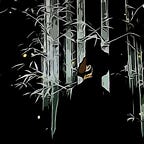The Duality, Paradox, and Harmony behind the YinYang
Symbology of Symbols: The YinYang
The Tao gave birth to One.
The One gave birth to Two.
The Two gave birth to Three.
The Three gave birth to all of creation.
All things carry Yin
yet embrace Yang.
They blend their life breaths
in order to produce harmony.— Lao Tzu
Perhaps the most dominant of concepts birthed by Chinese philosophy, the notion of Yin and Yang has had an influence that is easily observable, albeit its conceptual entirety remains evasively difficult to define.
In spite of this, the symbol has established a hold in many different places — ancient temples, treasured altars, and if not the shoulder of the girl next door, then the forearm of that self-proclaimed martial artist.
The Symbol
Unlike many glorified symbols, the YinYang doesn’t signify any religious philosophy but rather, is based on observation of nature, with the myths surrounding the philosophy being consequence rather than causation. The symbol seeks both to account for and to highlight the coexistence of duality in all things.
Yin (阴) is represented by black, where the Chinese character holds many a meaning. In a philosophical context, Yin can refer to the aspects of passivity, darkness, or coldness…
